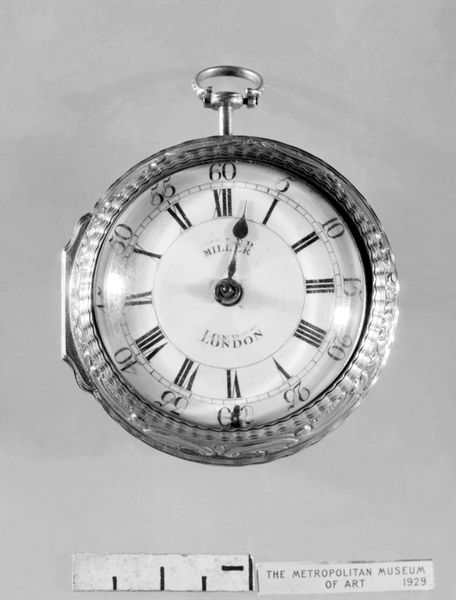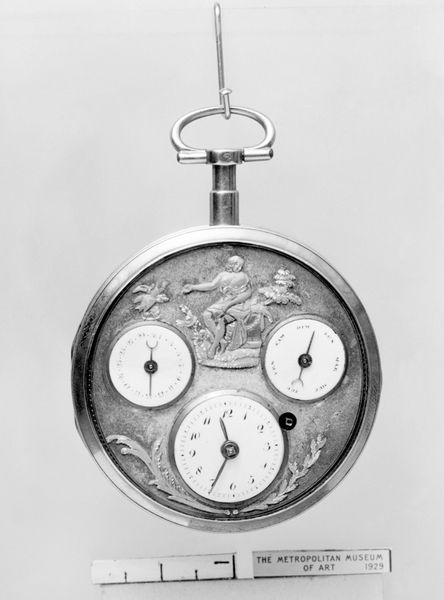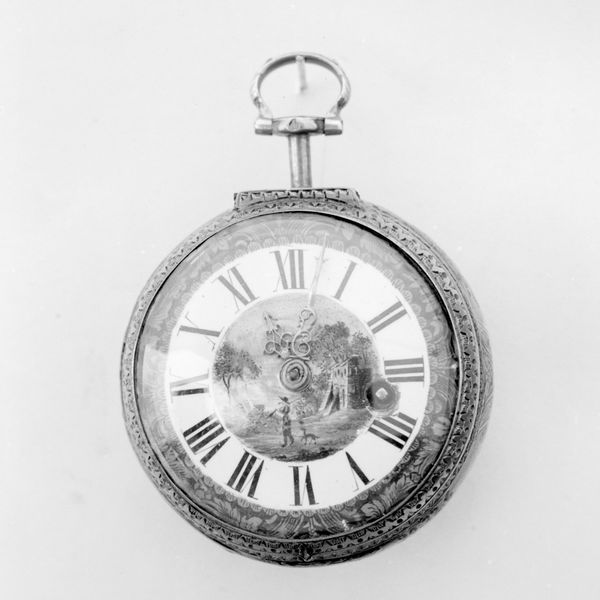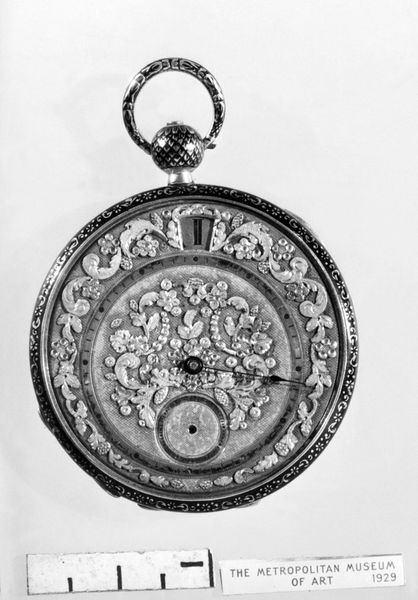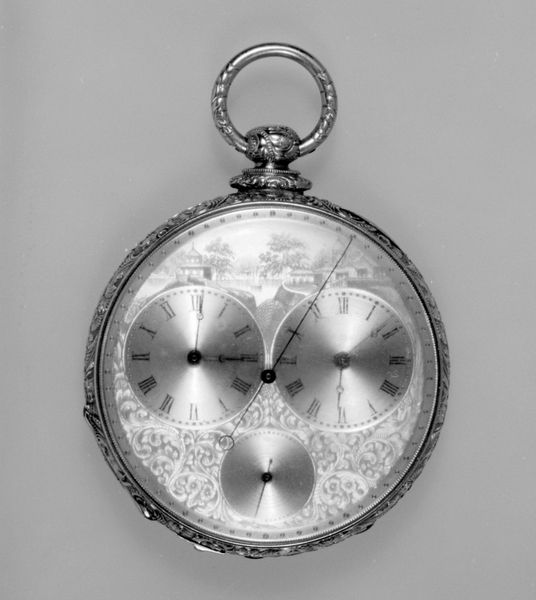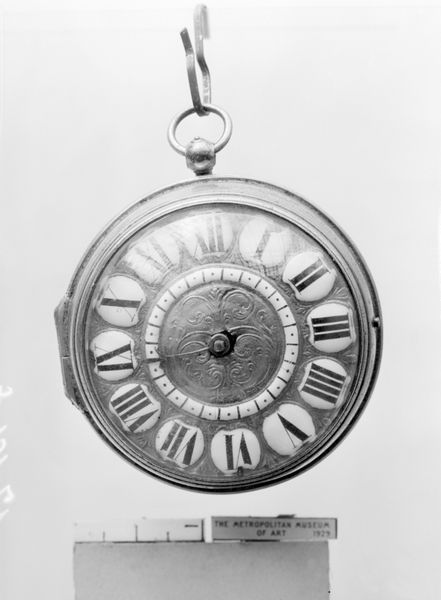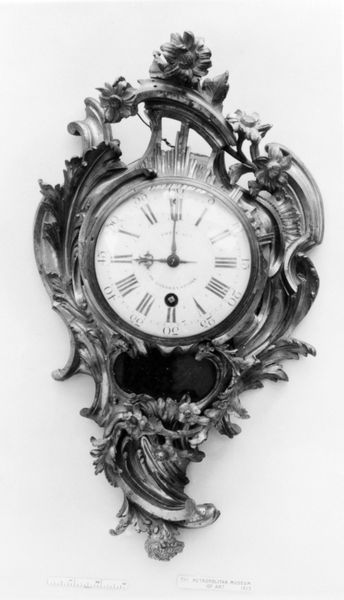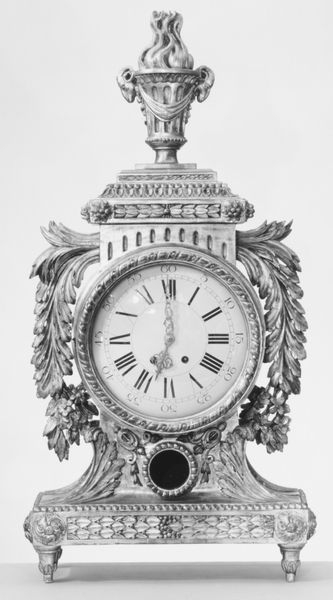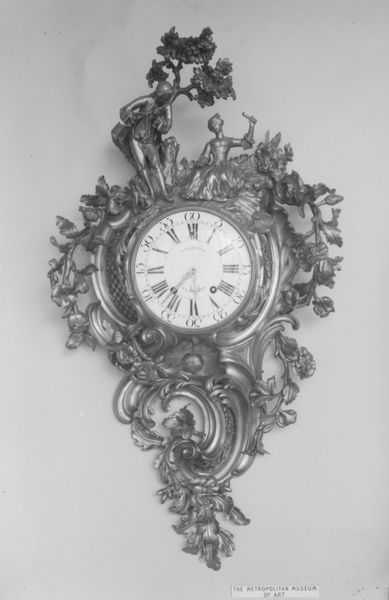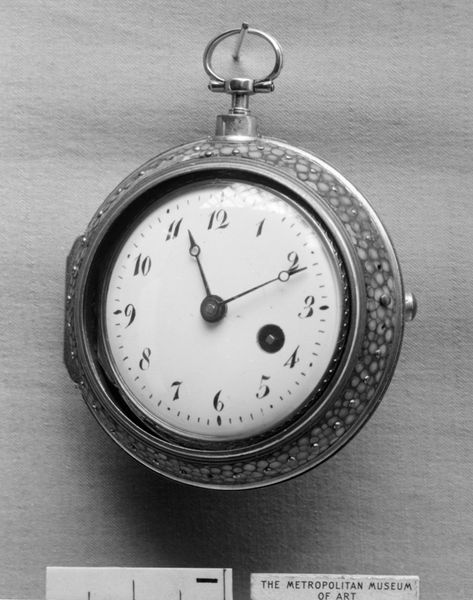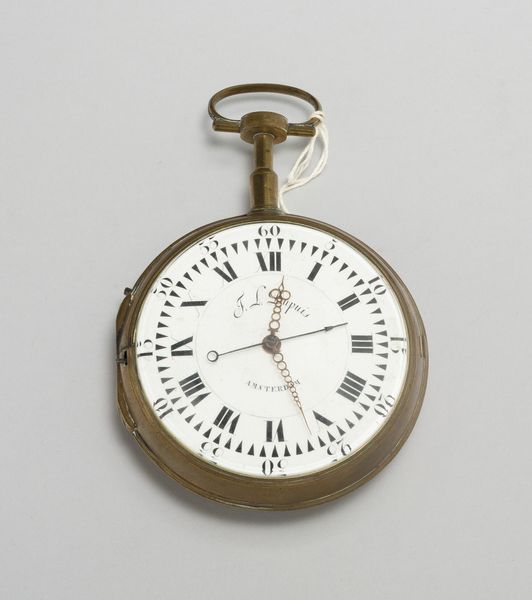
metal, photography, sculpture
#
baroque
#
metal
#
photography
#
sculpture
#
decorative-art
Dimensions: Diameter: 4 in. (10.2 cm)
Copyright: Public Domain
Curator: The decorative art piece before us, dated to approximately 1645-1655, is called "Traveling watch". It's currently part of the Metropolitan Museum of Art's collection. Editor: It's strikingly ornate! The Roman numerals practically leap out, yet the delicate floral pattern in the center dial is what really captures my eye. Curator: Given the period, this kind of ornamentation served to signify wealth and status. The Baroque style prevalent at the time, found expression even in functional objects. These “traveling watches”, were among the first portable timekeeping devices for personal use, though initially restricted to the upper classes. Editor: Absolutely! It seems far more than simply a timepiece; the intricate carving speaks to that. Notice the symbolism woven into its design, like a flower on the watch's core, reminding us of life's fleeting nature against the measured ticking. Curator: Precisely. This traveling watch comes from a pivotal time of European societal transformations where access to technological and scientific advancements trickled to the upper-middle class merchants and nobles eager to align with the court elites who owned similar objects. Owning a timekeeping piece spoke to one’s discipline and a keen sense of orderliness aligned to their socio-economic positions. Editor: Time itself became a status symbol. It makes you wonder, doesn't it, how much pressure there was to literally watch the clock. The weight of managing time… the anxiety it may have induced. I feel the object conveys this duality. A symbol of precision, progress but also a reminder of inescapable change and mortality. Curator: And the production of these early personal watches involved a complex web of skilled artisans, often working under patronage systems. Dissecting these networks lets us understand the cultural exchange and innovation during the 17th century. Editor: Yes, you are right. Analyzing objects such as this gives us the ability to consider and question a complex web of values placed on craftsmanship, power, wealth, and mortality that continues to haunt our social reality even today.
Comments
No comments
Be the first to comment and join the conversation on the ultimate creative platform.
